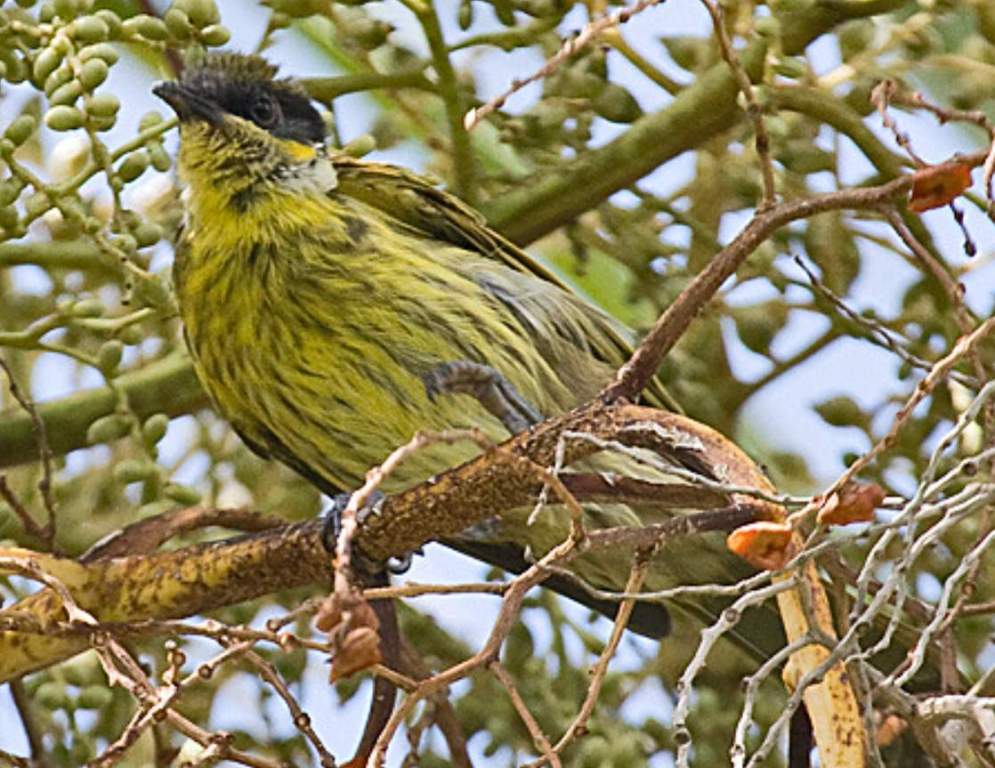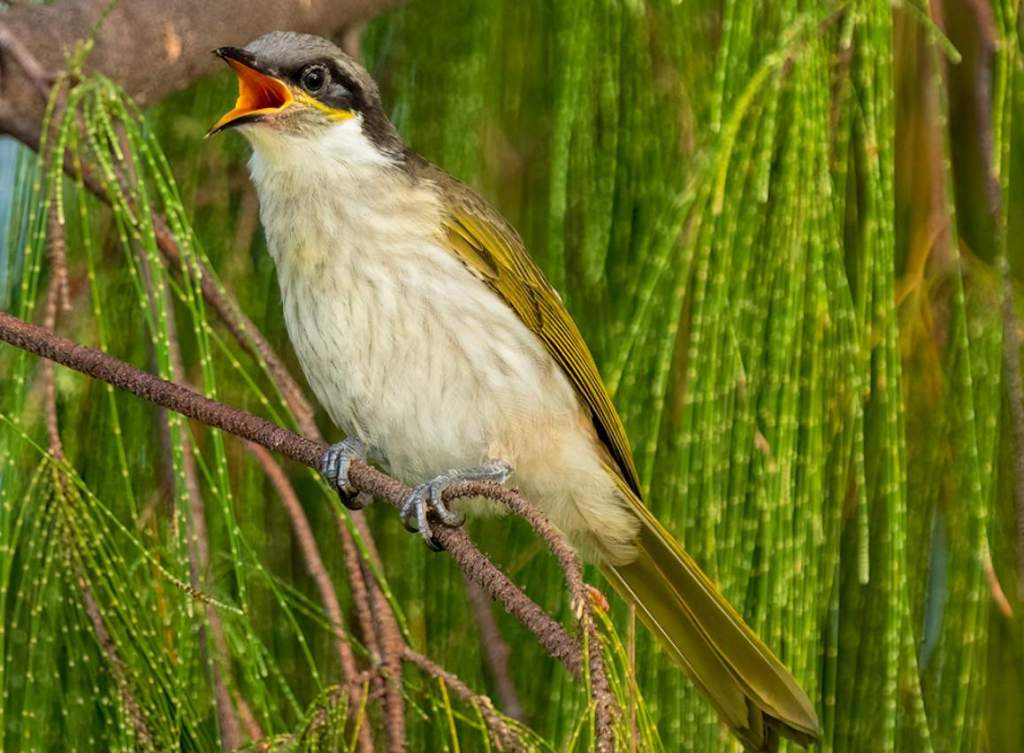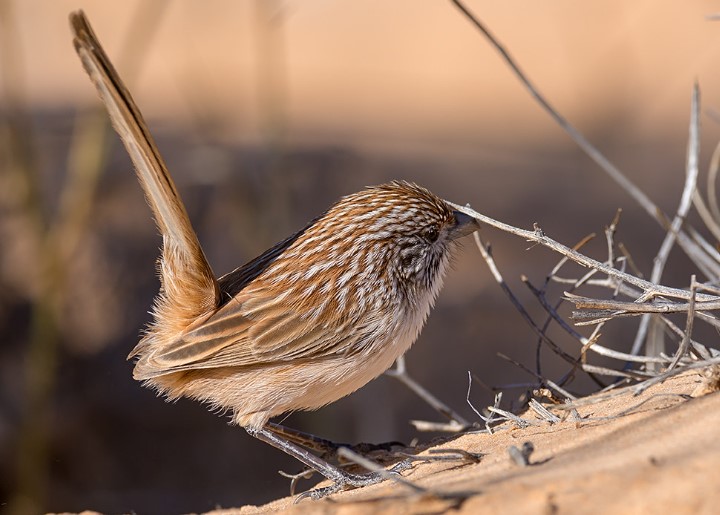Habitat: The varied honeyeater (Gavicalis versicolor) is a bird that is different from the mangrove honeyeater. Both can intergrade as one species, showing how unreliable plumage can sometimes be an indicator of species. In this case, the yellowish, streak-throated Varied Honeyeater of northeastern Queensland coasts intergrades and merges with the brown, scaly-throated Mangrove of the mid and south coasts between Bowen and Cardwell. Here, behavior and ecology are good clues to relationships.
Both races live in coastal mangroves, although the mangrove feeds on the blossoms of fringing eucalypts and banksias. The northern varieties enter coastal gardens and coconut groves on offshore islands for nectar. Indeed, much of its life is spent flying between these island-feeding groves and roosting and nesting grounds in mangroves. Both races also live in sedentary communal groups of two to seven or eight birds. They forage among branchlets and foliage in mangrove mid- and upper strata.
During the day, territorial groups gather to sing rollicking duets in the advertisement. They are clustered together, heads thrown up, on vantage perches in mangrove crowns, coconut fronds, or other trees nearby. Fan-tailed Cuckoos and Little Bronze Cuckoos occasionally parasitize various honeyeaters’ nests. Only the female builds the nest and incubates, but both parents and possibly other members of their group may feed and care for the young.

Identification: Both sexes are similar, but the male is larger. The crown to back is black with olive-green streaks, while the forehead is plain grey, and the rump is plainer, olive-brown (northern race); or the crown to rump is plain deep brown-grey, grey on the forehead. Wings and tail are grey-brown, extensively (northern race) to narrowly (southern race) washed and edged with citrine. A broad black stripe runs from the lores through the eye-down sides of the neck.
The parallel yellow streak below and over the ears is tipped with a white plume running into a broad white patch on the side of the throat. The throat is yellow, faintly streaked (northern race), or faintly barred brown, producing scaling (southern race). Breast to undertail are pale yellow, lightly streaked grey-brown (northern race); or off-white, heavily striped dusky, the stripes coalescing in a brown-grey breast band (southern race). Eyes are blue to brown-grey. The bill is black. The feet are dark gray. The immature (as adults) are of different races, more drab and lightly marked, and have browner eyes.
Diet: Aside from gleaning leaves and crevices along branches for insects, they even worked down toward the mud level for small crabs. They also probe the small, white mangrove flowers for nectar. Birds are noisy and aggressive in defense of feeding and breeding territories. Smaller birds are driven off in dashing chases through and around shrubbery.
Vocalizations: Honeyeater calls are scolding chatter or alarming sounds. The song is loud, rollicking, rolling, fluted trills, resembling those of the Singing Honeyeater, but louder and more varied; more protracted in the northern race.
Nesting: Nesting and breeding occur from April to December, mainly from August to November. Nest with a tiny cup of dry grass, seaweed, and rootlets, bound with cobwebs and adorned with cocoons. The nest is lined with fine rootlets and grasses. The nest is slung by the rim in a horizontal fork, usually among low mangrove foliage or in slightly isolated beachside trees. The nest is standing in or near saltwater, 1–5 meters above ground.
Eggs: The Varied Honeyeater lays two eggs: lustrous pink-buff, with a few tiny spots of red-brown and purplish, mainly at the larger end; oval, about 23 x 17 mm. The incubation period and fledging time of the singing honeyeater are probably the same.
Distribution: Mangroves, fringed seaside graves, gardens, and offshore islands are on the northeast coast of the mainland. These are from Cape York and the Torres Strait south to the mouth of Hastings River, NSW. Also coastal New Guinea and the islands.
Alternative Names: It is also known as mangrove honeyeater, fasciated honeyeater, scaly-throated honeyeater, and island honeyeater.
Size: The Varied Honeyeater is about 180–210 mm long.
Subspecies: About four, possibly five races; two in Australia. (G. v. sonoroides and G. v. versicolor)
Family: Meliphagidae
Genus: Gavicalis







